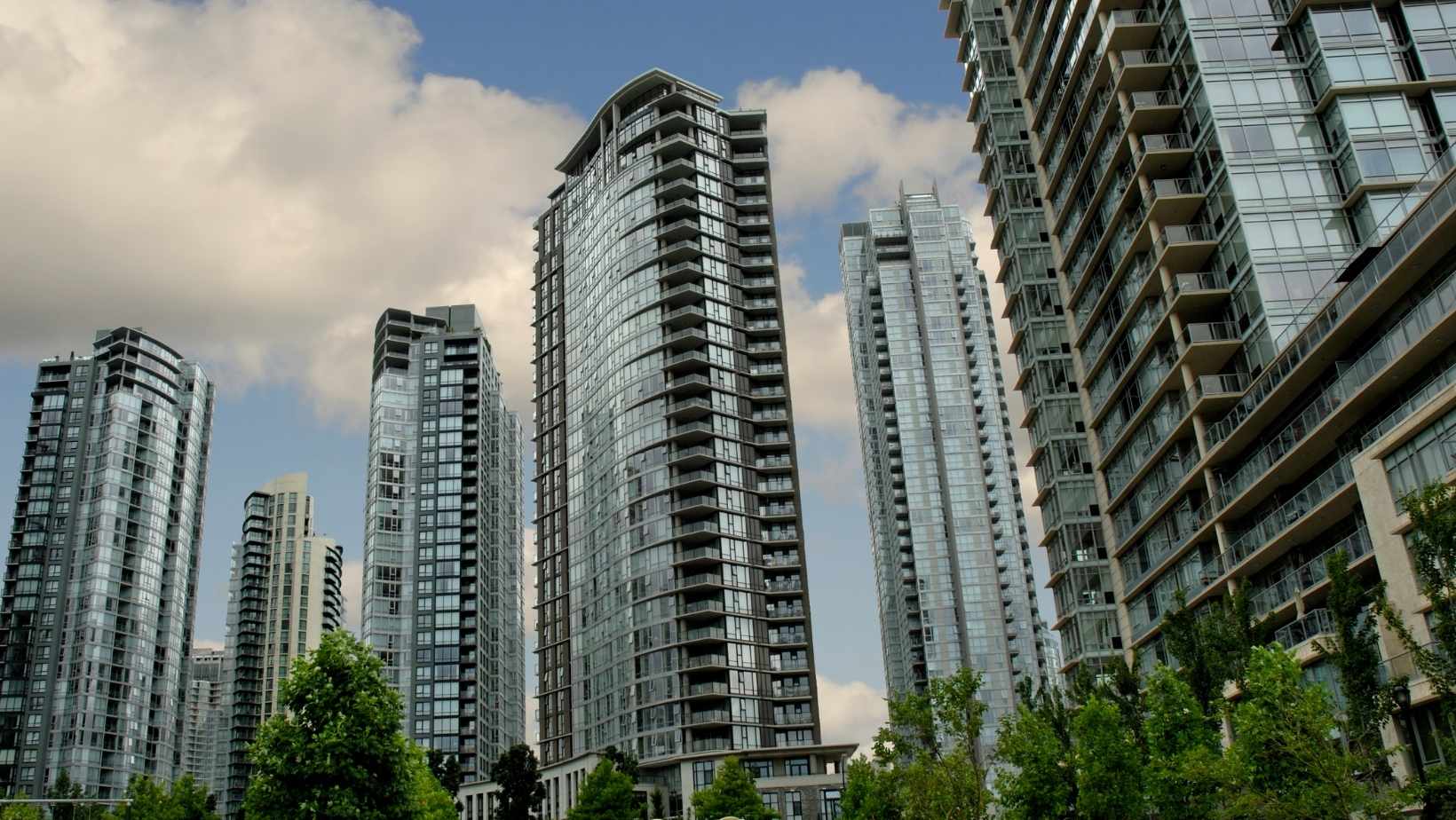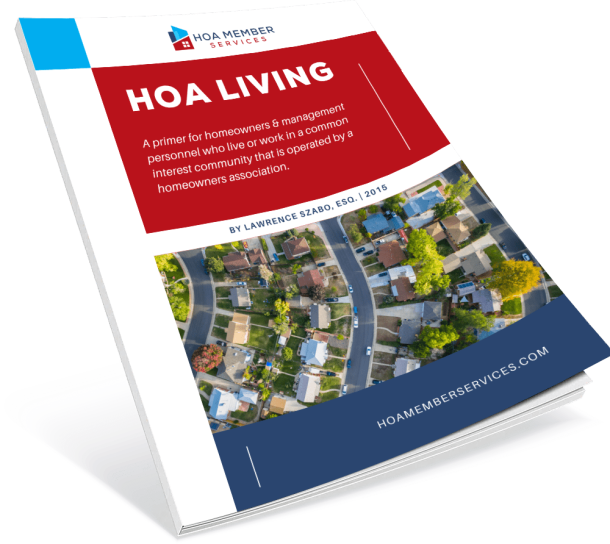Imagine waking up one day in your dream home, only to realize the very organization meant to protect your neighborhood has become the source of frustration.
Disagreements with the HOA board, rising fees, disputes over restrictions, or even neglect of common areas can make homeowners wonder: Can an HOA really be dissolved? The short answer is yes.
But the reality is far more complicated. Dissolving an HOA isn’t as simple as holding a vote and walking away. It’s a complex process involving state laws, covenants, and detailed governing documents.
Every decision must be deliberate, every step precise, because the future of your community and its property values may depend on it.
This article will break down what it truly takes to end a homeowners association HOA, why some people pursue it, and what happens if the effort succeeds or fails.
What Is a Homeowners Association?
Before we can talk about dissolving one, it helps to understand what a homeowners’ association (HOA) actually is. At its core, an HOA is a legal entity created to manage and maintain a neighborhood, subdivision, or condominium development.
It operates under a set of governing documents, the most important being the CC&Rs (covenants, conditions, and restrictions), which outline the rules every homeowner must follow.
The Structure of an HOA
Every HOA is run by a board of directors, usually called the HOA board. These board members are elected by the homeowners themselves, and they are tasked with carrying out the duties set forth in the association’s governing documents. Their responsibilities might include:
- Maintaining shared common areas like parks, private roads, and landscaping.
- Overseeing recreational facilities such as pools, gyms, or clubhouses.
- Enforcing restrictions that keep the neighborhood consistent and orderly.
- Collecting dues to cover costs and legal fees when necessary.
Why HOAs Exist
The purpose of a homeowners association (HOA) is not only to keep the community looking nice but also to protect property values. By ensuring that lawns are mowed, roofs are repaired, and houses conform to the covenants, the association aims to make sure that one neglected property doesn’t drag down the entire neighborhood.
The Balance of Obligations
Of course, HOAs are not without controversy. While they provide structure and maintain shared spaces, they also come with obligations. Each homeowner must pay assessments, follow the restrictions, and accept that the HOA board members have authority over certain aspects of their daily life.
In other words, a homeowners association is more than just a friendly neighborhood committee. It is a binding legal entity with real power, backed by state laws and enforceable through legal action if needed.
And that’s why the question of dissolution is so weighty; it means dismantling a framework designed to hold the entire community together.

Why Would Homeowners Want to Dissolve an HOA?
On paper, an HOA sounds like the perfect safeguard for your neighborhood. But in reality, many homeowners eventually begin asking if the association still serves their best interest. When frustrations pile up, the idea of dissolving an HOA shifts from an abstract thought to a serious option.
Common Reasons for Dissolution
Some of the common reasons people consider ending their homeowners association include:
- Financial Burden: Rising dues, unexpected legal fees, and mounting costs can leave homeowners feeling drained. If the HOA fails to manage its finances responsibly, the entire community pays the price.
- Declining Property Values: Ironically, the very thing an HOA is supposed to protect may be at risk. Mismanagement or neglect of common areas can drag down home values.
- Maintenance Failures: When an association can’t or won’t maintain common elements like recreational facilities, sidewalks, or private roads, frustration grows.
- Restrictive Covenants: Overly strict CC&Rs or unreasonable restrictions may clash with the way individual homeowners want to live in their house.
- Poor Leadership: Conflict within the HOA board or unpopular decisions by board members can spark unrest and resentment among the members.
When Homeowners Feel the HOA No Longer Works
At some point, homeowners feel that the rules, dues, and obligations outweigh the benefits. If the HOA fails to address concerns, resentment spreads across the community.
Other homeowners may join the call for change, creating momentum toward considering a full dissolution.
The Last Resort
It’s worth noting that pursuing HOA dissolution is often seen as a last resort. Most communities explore less drastic options first, such as electing new board members, amending the CC&Rs, or bringing in a real estate attorney for guidance.
But when those efforts stall, the question of dissolving an HOA becomes impossible to ignore.
Legal Framework for HOA Dissolution
The idea of dissolving an HOA may sound straightforward, but the reality is anything but. Because an HOA is a legal entity, its termination requires following strict state laws and the association’s governing documents.
Skipping steps or ignoring requirements can leave homeowners exposed to liabilities and disputes.

Governing Documents and State Laws
Every homeowners’ association HOA is bound by its CC&Rs, bylaws, and other governing documents. These spell out whether board members or the general members must initiate the process, what percentage of the vote is required, and how consent from unit owners or other homeowners must be documented.
Yet even if the association’s governing documents outline a path, they don’t override state laws. Each state sets its own rules for the dissolution process.
For example, in Florida, an HOA must often prove it has satisfied outstanding debts and obligations before completing dissolution. In other states, courts may need to approve the legal process.
The Role of Legal Oversight
Because the HOA is a recognized legal entity, winding it down typically requires filing paperwork with the city or state. This involves not just the HOA board members but often a real estate attorney or legal team who are well-versed in HOA law.
Without proper filings, individual homeowners could be held liable for mistakes, unpaid debts, or misallocated assets.
Balancing Law and Community
This framework highlights why dissolving an HOA is a complex process. It requires careful navigation of laws, covenants, and sometimes even legal action. Ultimately, both the community and the courts want assurance that shared common areas, debts, and ongoing obligations will be handled responsibly.
In short, no HOA can simply close its doors overnight. It takes structure, oversight, and strict compliance with the law to reach a lawful dissolution.
The Dissolution Process Explained
When talk of dissolving an HOA becomes serious, the next question is: what does the actual process look like? The truth is that it’s not a quick vote at a meeting.
The dissolution process is step-by-step, carefully guided by state laws, governing documents, and the realities of unwinding a legal entity that often owns assets and manages substantial responsibilities.
Step 1: Review Governing Documents
Everything begins with the CC&Rs and bylaws. These governing documents spell out exactly how the HOA board must handle a potential dissolution. Some require a simple majority vote; others demand a supermajority or even unanimous consent from unit owners.
The covenants may also explain what happens to common elements like parks or shared parking once the association no longer exists.
Step 2: Secure Member Approval
No HOA dissolving effort moves forward without homeowner involvement. Typically, members must participate in a formal vote. Because ending an HOA affects everyone’s property values and daily obligations, the bar is high.
It’s common for state laws to require two-thirds or three-quarters of homeowners to agree. Disagreements often arise when individual homeowners or other homeowners worry about who will maintain common areas after the HOA is gone.
Step 3: File the Paperwork
Once approval is secured, the HOA board members must file the proper documents with the city or state. This is where professional help becomes crucial.
A real estate attorney or a legal team well-versed in HOA law ensures the legal process is completed correctly. Missing a filing or overlooking a statute could leave board members personally held liable for mistakes.
Step 4: Address Debts and Assets
Before an HOA can close its doors, it must settle outstanding costs, legal fees, and debts. If the association owns land, buildings, or even recreational facilities, those must be sold, transferred, or reassigned.
For example, if the HOA owns a clubhouse or common areas, the community may transfer ownership to the city or divide it among individual homeowners. This step is often where disputes become most heated.
Step 5: Transfer Maintenance Responsibilities
Once assets are distributed, the question remains: who will maintain what? If private roads or common elements exist, someone must take responsibility.
Sometimes the city accepts them; other times, the burden falls directly on individual homeowners. Without careful planning, this transition can harm the community and even impact home values.
Step 6: Finalize Dissolution
After debts are cleared, assets handled, and responsibilities transferred, the final step is completing all state-required documentation. At this point, the HOA ceases to exist as a legal entity. The community continues, but without the framework that once tied everyone together.
Challenges of Dissolving an HOA
Even when frustrations run high, pursuing dissolution is not an easy path. Ending an HOA is a complex process filled with hurdles that can test the patience and finances of everyone involved. For many communities, it quickly becomes clear why this step is often treated as a last resort.
Financial and Legal Burdens
One of the biggest obstacles is money. The dissolution process itself involves legal fees, filing costs, and sometimes drawn-out legal action.
If the HOA fails to settle debts, the board members and even individual homeowners may be held liable. These risks make many homeowners hesitant to push forward.
Dividing Assets and Responsibilities
Another challenge is what happens to the common areas and common elements. Parks, pools, recreational facilities, and even private roads need ongoing care. Without the association, someone must step in to maintain them.
Often, the city refuses responsibility, leaving individual homeowners to figure out who pays, who manages, and how disputes are resolved.
Community Disagreements
Dissolution requires a strong consensus. Securing the necessary vote can be difficult, especially when other homeowners prefer to keep the HOA intact. Some fear declining property values if the association disappears.
Others worry about losing the protections the CC&Rs provide against neglected houses or disruptive behavior.
Legal Complexities
Because an HOA is a legal entity, every step must meet strict state laws and comply with the association’s governing documents. Overlooking a single requirement could invalidate the entire effort.
That’s why most communities rely on a real estate attorney or experienced legal team for guidance.
In the end, the challenges of dissolving an HOA are real and often overwhelming. But for homeowners who feel the burden of mismanagement or unfair obligations, pushing through these obstacles may still feel like the only way forward.
Special Cases – Condominiums vs. HOAs
When it comes to dissolving an HOA, not all communities face the same roadblocks. Condominium associations present a unique challenge because ownership structures differ from traditional neighborhoods.
What looks complicated for a single-family subdivision often becomes even harder for a condominium building.
Shared Ownership of Common Elements
In a subdivision, the association usually oversees common areas like parks, trails, or private roads. However, in a condominium, each unit owner has a direct stake in the common elements, including hallways, elevators, roofs, plumbing, and more.
Dissolving that association doesn’t just mean releasing a few obligations. It means deciding how those shared parts of the property will be managed and who will maintain them once the dissolution process is complete.
Reaching Agreement Among Unit Owners
Another hurdle is consensus. While many HOAs require a supermajority vote, some states demand near-unanimous agreement among unit owners before a condominium association can dissolve.
That means a single dissenting voice can stall the entire effort. Securing consent from dozens, or even hundreds, of owners in one condominium building is no small feat.
Financial and Legal Entanglements
Because condominium associations are also legal entities, unwinding them involves not just state laws but also obligations to mortgage lenders and insurance providers. Debts, legal fees, and the distribution of reserves must all be addressed.
If the association owns property beyond the individual units, such as a parking deck or clubhouse, those assets must be divided or transferred.
Why Condominium Dissolution Is Harder
In short, condominium dissolution is more intricate than traditional HOA dissolution. Each decision impacts every individual homeowner, every unit owner, and the very structure of the building itself.
The risks of disputes, unpaid costs, and loss of stability are high, which is why most experts caution that ending a condominium association is rarely in the best interest of the community.
What Happens If an HOA Is Dissolved?
The question many homeowners ask is: What happens if an HOA is dissolved? The answer, however, depends on how well the dissolution process was planned and executed.
The moment an HOA ceases to exist as a legal entity, the community faces immediate and long-term changes.
Ownership of Common Areas
The most pressing issue is what to do with the common areas and common elements. If the HOA owns land, a clubhouse, or recreational facilities, those assets must either be sold, transferred to the city, or divided among individual homeowners.
In many cases, the burden of maintaining parks, landscaping, or private roads shifts directly onto unit owners. Without clear agreements, disputes can quickly arise.
Maintenance and Obligations
Once the association is gone, the responsibility to maintain shared spaces no longer belongs to the HOA board. Instead, it falls to individual homeowners or informal groups. This often means higher personal costs and more disagreements over who pays what. Some homeowners may refuse to contribute, leaving others with an unfair burden.
Property Values and Stability
One of the biggest unknowns is the impact on property values. In some cases, the absence of restrictive CC&Rs and dues can make a community more attractive to buyers.
In others, neglected common areas or unclear responsibilities can lower home values. Much depends on whether homeowners step up to preserve the neighborhood after dissolution.
The New Normal
Ultimately, life after dissolving an HOA is shaped by the choices of the members themselves. Some communities thrive without the association, relying on cooperation.
Others struggle with disputes, deferred maintenance, and falling property values. The outcome is never guaranteed, only that the structure binding the community together has been permanently removed.
Practical Considerations Before Pursuing Dissolution
Before deciding that dissolving an HOA is the right move, it’s worth pausing to consider alternatives. The dissolution process isn’t just a matter of paperwork; it reshapes the entire community, redistributes responsibilities, and may create new challenges.
For many homeowners, it’s a decision that should only come after exploring every other option.
Exploring Alternatives
- Reform the HOA Board: Sometimes, frustration comes from leadership, not the structure itself. Electing new board members or reshaping the HOA board can restore trust.
- Amend the CC&Rs: If certain restrictions or rules feel outdated or unfair, the association’s governing documents can often be revised through a vote.
- Professional Assistance: Hiring an HOA attorney or experienced manager can guide the board members in fixing issues without full dissolution.
Weighing the Costs and Risks
Ending an HOA requires legal fees, administrative costs, and significant effort. More importantly, once the association dissolves, individual homeowners may inherit the obligations of maintaining common areas.
That can mean organizing payments, deciding who takes responsibility, and handling disputes without a central authority.
The Best Interest of the Community
Ultimately, the key question is whether dissolving an HOA truly serves the best interest of the community. Will the change improve daily life and protect property values, or will it create instability and tension among members?
Thoughtful reflection helps avoid a decision fueled only by short-term frustration.
A Last Resort
Because state laws and covenants make dissolution so demanding, most experts caution that it should be considered a last resort. With patience and the right guidance, many communities find ways to repair, rather than dismantle, their association.

How to Prepare for HOA Dissolution
If your community has decided that dissolving an HOA is the only path forward, preparation is everything. The dissolution process can be long, expensive, and emotionally charged.
Taking careful steps early helps avoid missteps that could delay or even derail the effort.
1. Build Homeowner Support
Start by communicating openly with members and other homeowners. Transparency about the reasons for dissolution, the potential impact on property values, and the transfer of obligations is essential. Without broad support, securing the necessary vote and consent will be nearly impossible.
2. Consult Professionals
Even though HOA board members may lead the effort, it’s wise to bring in professional assistance. A real estate attorney or a trusted legal team expert in HOA law can explain state laws, handle filings, and guide the legal process.
Their expertise helps ensure no step is overlooked and reduces the risk that individual homeowners are later held liable for mistakes.
3. Organize Documentation
Review the association’s governing documents, including the CC&Rs and bylaws. These define how the vote must occur and what percentage of approval is required.
Gather financial statements, outstanding debts, and records of assets the HOA owns, such as common areas or recreational facilities. This documentation will be necessary when you file with the city or state.
4. Plan for the Transition
Perhaps the most difficult part of preparation is deciding who will maintain the common elements after dissolution. Will the city assume control, or will individual homeowners need to organize maintenance schedules and collect payments themselves? Clear answers reduce conflict later.
By carefully preparing, homeowners can move through the dissolution process with greater confidence, ensuring the community understands not only how the HOA will end, but also what life will look like after it’s gone.
Key Takeaways
Ending a homeowners’ association is not a decision to take lightly. The dissolution process affects not only paperwork and legal filings but also the everyday life of the community. Here are the main points to remember:
1. Dissolving an HOA Is Possible — but Complicated
An HOA is a legal entity, governed by state laws and its CC&Rs. That means dissolution is a complex process, requiring strict compliance with the association’s governing documents and the law.
2. Member Support Is Essential
Without a strong vote from homeowners, the effort cannot move forward. Building consensus among members and securing consent from unit owners or other homeowners is one of the most challenging steps.
3. Debts and Assets Must Be Settled
Before closing, the association must address outstanding costs, legal fees, and any property the HOA owns. Shared spaces like common areas, private roads, or recreational facilities must be reassigned to the city or divided among individual homeowners.
4. Risks Don’t End With Dissolution
If the process is mishandled, board members or individual homeowners could be held liable for unpaid debts or overlooked filings. Without clear planning, disputes over who will maintain common elements may quickly arise, affecting property values.
5. Consider Alternatives First
Because of the financial burden, legal hurdles, and potential impact on home values, experts advise that dissolving an HOA should be treated as a last resort. Options like reforming the HOA board, amending the covenants, or hiring a real estate attorney for guidance can often address problems without dismantling the association entirely.
In the end, deciding whether to dissolve comes down to what truly serves the best interest of the community and its homeowners.
Can an HOA be Dissolved: The Final Verdict
So, can an HOA be dissolved? Well, it’s legally possible, but it is rarely simple. Between state laws, strict governing documents, and the need for overwhelming homeowner support, the road to dissolution is steep.
Even when successful, it leaves difficult questions about who will maintain common areas, how debts will be paid, and whether property values will rise or fall without the guiding hand of the association.
That’s why experts emphasize treating HOA dissolution as a last resort. For many communities, reform, whether through new board members, updated CC&Rs, or stronger leadership, can offer a better path forward.
Still, for homeowners who feel their association no longer serves the best interests of the neighborhood, taking this step may be the only way to start fresh.
Need clarity on whether dissolution is right for your community? Join us at HOA Member Services for resources, guides, and unlimited personal support from an HOA attorney.




